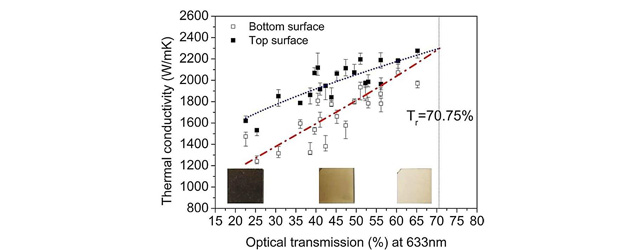Polycrystalline diamond: thermal conductivity versus optical defects (Vol. 49, No. 1)

With development of technologies, diamond can be produced in big amount and various qualities. With the continuing advances in production of synthetic diamonds, diamond is feasible for more applications such as heat sink for electronics. In this work, the authors have worked together with one of the largest synthetic diamond company (IIa Technologies Pte. Ltd. Singapore). The authors have systematically studied the influence of various optical active defects on thermal conductivities for synthetic polycrystalline diamonds. It is found that the top surface, which shows higher thermal conductivity compared to the bottom surface (where growth nucleation started), also shows lower densities of defects than the bottom surface. The influence from non-diamond carbon phase and C-H stretch for top surface is not significant because of the low concentration of these defects on the growth surface. However the heat transport is still limited by the presence of Ns0 defect, which is the main contributor lowering the thermal conductivities on the top surfaces. For the bottom surface, non-diamond carbon phase, Si vacancy, C-H stretch and Ns0 defects all lead to an obvious reduction in the thermal conductivity. Furthermore, a well fitted equation was given to quickly estimate the thermal conductivity by optical transmission, and the equation was demonstrated to be valid at any wavelength in visible region. This enables a fast and reasonable estimation of thermal conductivity by visual inspection.
Q. Kong, A. Tarun, C. M. Yap, S. Xiao, K. Liang, B. K. Tay, D. S. Misra, Influence of optically active defects on thermal conductivity of Polycrystalline diamond, Eur. Phys. J. Appl. Phys. 80, 20102 (2017)
[Abstract]





